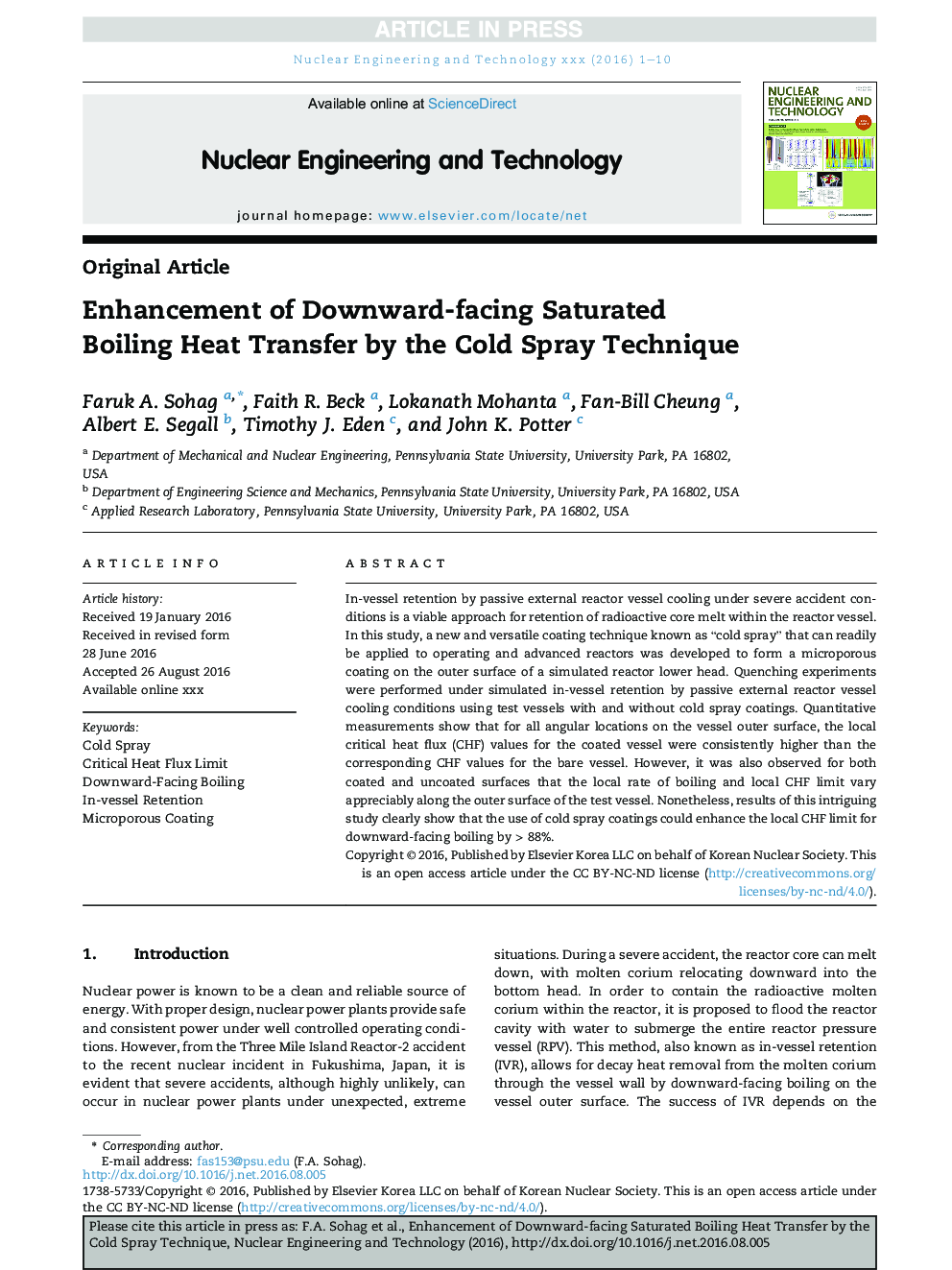| Article ID | Journal | Published Year | Pages | File Type |
|---|---|---|---|---|
| 5478125 | Nuclear Engineering and Technology | 2017 | 10 Pages |
Abstract
In-vessel retention by passive external reactor vessel cooling under severe accident conditions is a viable approach for retention of radioactive core melt within the reactor vessel. In this study, a new and versatile coating technique known as “cold spray” that can readily be applied to operating and advanced reactors was developed to form a microporous coating on the outer surface of a simulated reactor lower head. Quenching experiments were performed under simulated in-vessel retention by passive external reactor vessel cooling conditions using test vessels with and without cold spray coatings. Quantitative measurements show that for all angular locations on the vessel outer surface, the local critical heat flux (CHF) values for the coated vessel were consistently higher than the corresponding CHF values for the bare vessel. However, it was also observed for both coated and uncoated surfaces that the local rate of boiling and local CHF limit vary appreciably along the outer surface of the test vessel. Nonetheless, results of this intriguing study clearly show that the use of cold spray coatings could enhance the local CHF limit for downward-facing boiling by > 88%.
Keywords
Related Topics
Physical Sciences and Engineering
Energy
Nuclear Energy and Engineering
Authors
Faruk A. Sohag, Faith R. Beck, Lokanath Mohanta, Fan-Bill Cheung, Albert E. Segall, Timothy J. Eden, John K. Potter,
